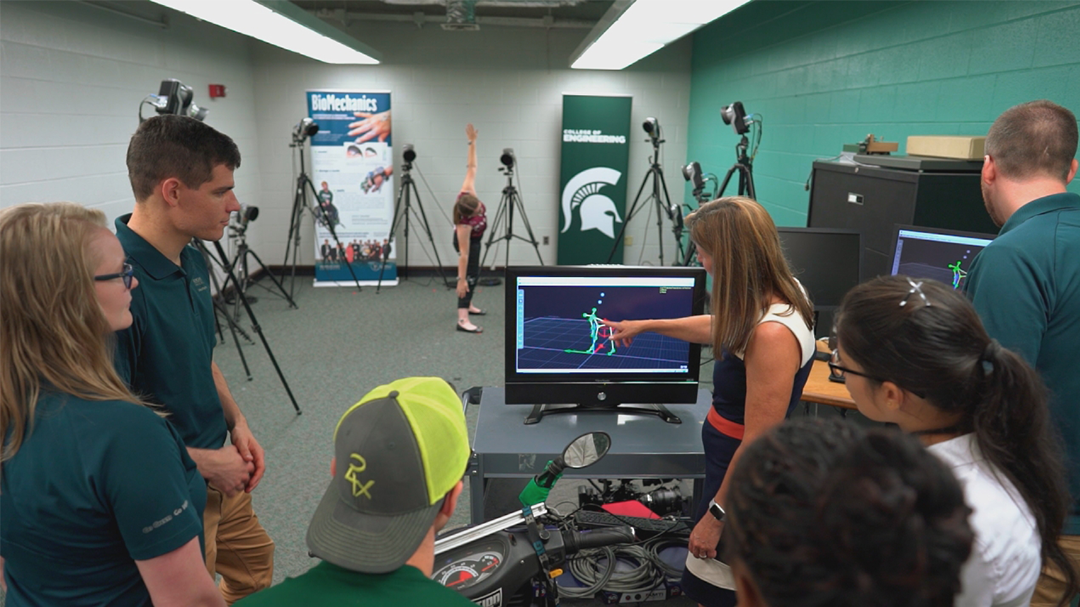John Tolley, December 27, 2019
The human body is a beautiful machine. On average, 206 bones give us structure, 650 muscles give us motility, and an estimated 90,000 miles of nerves and neurons carry information throughout.
At Michigan State University, one lab is dedicated to enriching our understanding of how the human machine operates and, in particular, how devices can be designed to better serve the body.
?Here in the Biomechanical Design Research Laboratory (BDRL) at Michigan State University, we're applying principles of mechanical engineering to the human body,? notes lab director Tamara Reid Bush, associate professor of mechanical engineering at MSU.
Through mathematical modeling and a host of force measurement and imagining tools, the lab assesses the strengths and limitations of individuals in order to understand their needs. In some cases, it may be that there is a commercially-available product, but it needs modification in order to fit specific needs. In other cases, the lab is called upon to design from the ground up a particular device.
MSU is home to one of the most robust collegiate adaptive sports facilities in the nation, one that is open not only to students and faculty, but to the public as well. While it is a decidedly accessible facility, still some find difficulty in pursuing the activities that interest them, Bush explains
?There's this one individual, he likes to play basketball, he wants to play basketball, but he doesn't have a full-enough function in his legs,? says Bush. ?He has limited function, so he can't run up and down the basketball court. So, we were asked to design and develop a wheelchair that he could be on the court playing wheelchair basketball or wheelchair hockey, which uses the ability he does have in his legs to propel the wheelchair forward and backward.?
DO and PhD candidate Amber Vocelle is a graduate researcher in the BDRL studying force ability in the thumb, how that changes over time, and how, for those with conditions such as arthritis, thumb strength and mobility can be improved. The specialized and advanced tools available in the lab are helping her build a more robust model of thumb movement.
?So, in a clinical setting we only have access to measures that will allow us to look at range of motion one degree at a time or one direction at a time,? explains Vocelle. ?But my research is focused on the thumb, which can move in many directions. In the laboratory setting, we can use reflective markers to place them on the individual and watch them move in 3D. We can see all the different movement capabilities that they can generate.?
Further, she notes, that clinical grip force measurements don?t capture the granularity of an individual finger?s ability. That has led the BDRL to design bespoke devices that allow them to look at specific thumb forces and track the impression of thumb force-ability through a variety of treatment interventions.
The BDRL?s success in designing devices for those with a variety of ability limitations has led them to become a sought-after resource. As Bush explains, this means she has a wait-list of students looking to work in the lab, but also a wait-list of requested devices, making support from the university and the public crucial to their mission.
?Michigan State University is a wonderful support system for the work that we do, but we also look to the community to help support particularly these devices for individuals who have functional limitations,? Bush says. ?We have a donations page set up through my biomechanical design research website where individuals, alumni, community, can donate directly to the development of devices for individuals who have lost a function. That support is critical to continue developing these products and having these devices being shared with folks in the community or even beyond the community.?







